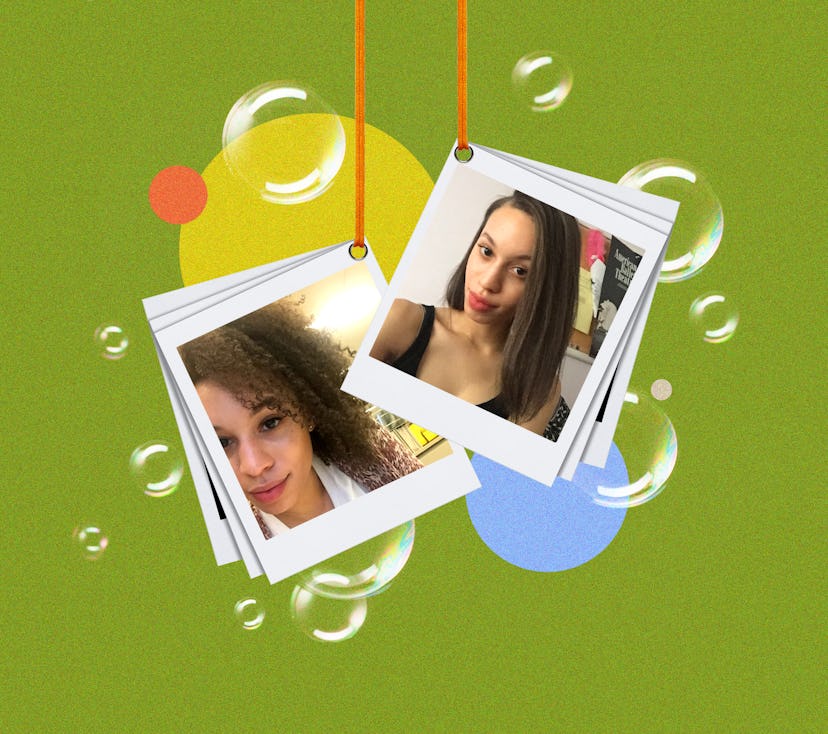Curl Quest
A (Not-So) Natural Hair Journey
Senior beauty editor Erin Stovall dishes on her 4C curl quest.
I’ve heard it said a few different ways, but it always rings true. “Ask a Black woman about her hair and she’ll tell you about her life.” My hair journey has been complicated, to say the least. Over the past three decades, I’ve gone from natural to relaxed and back again — twice. It’s taken years for me to figure out what works best for my tight 4C curls — and, to be frank, it’s still a work in progress, filled with trials and (many, many) errors. Keeping my natural coils in tip-top shape takes time and effort.
I wore my natural coils until I turned 12. During that time, my mom styled my coils almost exclusively. She handled it all: the wash-day tangles, the hours-long deep-conditioning process, the intricate braiding patterns. When I hit middle school and wanted to start styling my own hair, my relationship with it drastically changed. Suddenly, I was the one spending hours in the bathroom trying to flat iron and gel my 4C curls into submission. My little arms were the ones hurting as I attempted to braid all on my own.
I personally loved my natural texture, but the pressure to have every baby hair perfectly placed felt like a lot (head’s up: coily hair doesn’t lay flat). It took work, and I felt like the way that my hair naturally grew out of my scalp was unacceptable to society. The kind of curls that were glamorized were loose and silky; representation for coarse, tightly-coiled textured hair wasn’t (and still isn’t) as common. Even the Black celebrities I idealized — Aaliyah, Beyoncé, and Gabrielle Union just to name a few — seemed to have long, straight hair. Suddenly I wanted nothing more than to have the same super straight strands. They appeared to be much easier to manage.
For years, I begged my mom to let me relax my hair and was beyond thrilled when she finally relented. Over the next six years, I happily relaxed every other month and straightened it just about every day. The heat tool usage alone would have been enough to permanently damage my curl pattern. The constant relaxing, however, was the fatal blow. Still, I barreled on, thinking straight hair was “easier” to style and willfully ignoring the fact that my relaxed hair was falling out — and quickly.
One day, I looked down as I was standing in front of the mirror brushing my hair. I was absolutely covered in short, broken-off pieces; it seemed like more hair was strewn around my feet than was on top of my head. Tears stung my eyes as I stared at my reflection. I had a misshaped mullet (this was before they were cool), and I finally had to face facts: My coils had officially been damaged to the point of no return, and I had to try going natural.
The transition was anything but. The “big chop” was out of the question — 18-year-old me didn’t have the confidence to pull off a short haircut. For the next few years, I kept my natural hair braided underneath various wigs and weaves. But one day, I was twisting my hair and my coils stretched way, way down past my shoulders. I finally — finally! — had long, luscious, chemical-free coils. I had religiously avoided hot tools for years, and my hair was the healthiest it had been since I was a little girl.
Eight years went by, my career advanced, and overall I was happy with my natural texture. But over time, my old grievances would slowly reemerge — in the evenings, when I’d spend hours two-strand twisting my hair so that my curls could have picture-perfect definition in the morning; every weekend, when I’d sacrifice an entire day to pre-poo, wash, and deep condition; and during the night, when bulky flexi-rods made sleeping uncomfortable.
I started cutting corners and reacquainted myself with the flat iron. I straightened my curls with wild abandon, more recklessly than ever before. Months later, a hairstylist shook her head with disappointment as she examined my coils. They were, once again, completely fried.
She suggested that I relax my hair again, and my eyes widened in shock. I had sworn off relaxers forever. Plus, would I be seen as a “traitor” to the natural hair community? I put my faith in my stylist and let her go to work. She used a mild formula that left me with a looser curl pattern, not stick-straight, flat hair. It seemed like the perfect solution, and I was in love.
Six months later, March 2020 happened, and salons were ordered to close — I had no choice but to transition my hair back to its natural state. Even though salons have opened back up, I’ve decided to stick with it — it’s a learning process, sure, but one that I actually enjoy these days. My hair regimen is time-consuming, but I light a Diptyque candle in my bathroom, turn on some tunes, and think of those hours as an essential part of my self-care routine. Will I go back to relaxing in the future? Maybe. Will I let anyone else’s idea of “natural” influence my decisions again? Never.
